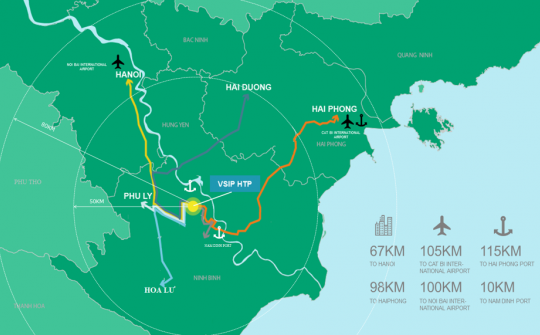
Currently, Hai Phong City’s port system consists of around 50 ports, including 46 cargo-loading ports with a total length of about 13km. The modern seaport system can handle container ships of up to 18,000 TEUs, facilitating direct transportation to the US and Europe’s major ports, thus enhancing Hai Phong City's competitiveness in the port sector.
The container port area in Lach Huyen is being developed and invested in the construction of eight wharves. It is expected that when wharves No. 3 to No. 8 are put into operation in 2027, the Lach Huyen deepwater area will have had eight wharves totaling 3,300 meters in length, with a container throughput capacity of approximately 6 million TEUs, meeting current and future demand for goods transportation in the region.
Additionally, the future development of ports in Lach Huyen and Nam Do Son areas will enable Hai Phong to accommodate larger vessels, with a tonnage of up to 200,000 DWT (18,000 TEUs), liquid and gas ships have a capacity of up to 150,000 DWT, general cargo ships have a capacity of up to 200,000 DWT and passenger ships have a total capacity of up to 225,000 GT.
With the completion of ports No. 7 and No. 8 in Lach Huyen, Hai Phong City has essentially completed the goal of developing deep-water ports by 2025, solidifying its position as an international gateway port. This will not only improve the cargo capacity of Hai Phong Seaport but also establish it as a vital link connecting the Northern provinces with the rest of the country. This development aligns with the city's vision to become a green, civilized, and modern port city, a key player in the national marine economy, and a logistics service center, per Resolution 45 of the Politburo on building and developing Hai Phong City to 2030, with a vision to 2045. It seems that Hai Phong City is correct to focus on maritime development with its goal of prosperity through the sea./.
PV





